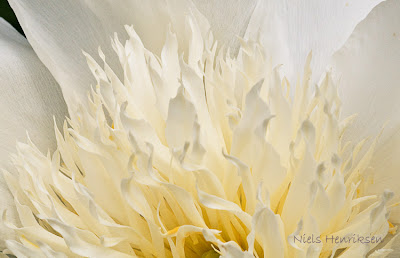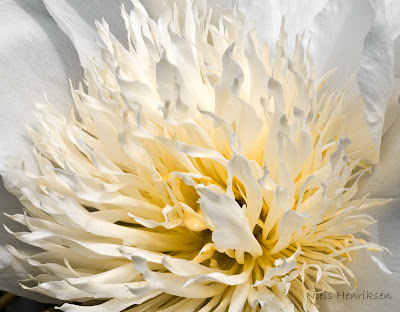I was thinking, obviously too much, about how we see or label ourselves and how this might influence our choices or approaches to subjects, compositions, etc. Am I a photographer, artist or just some crazy guy behind the camera. The last probably being more to the truth.
One thing I know I'm not is a 'commercial' or 'professional' photographer. Even these labels have many interpretations. By these terms I mean a person who can consistently deliver quality materiel under stressful and changing environments. Its not too hard to achieve success under great conditions. The good photographers deliver no matter what happens, every time and I know I would run into trouble pretty quickly.
For me photography is first and foremost about pure enjoyment. Like exploring with a microscope or telescope but with less magnification. Being able to capture a fleeting moment in time which was 3D and render into 2D flat image. By use of selective focus, DOF, time and digital enhancements I can try to reveal a unique charm, even though they are not always pleasant, or character to that moment in space. I am creating an interpretation of a real event, like portrait painting of a person.
I therefore tend to think of myself as an artist who uses the camera-tool, as opposed to the brush-tool, to create images maybe even art work. I tend to shun the label photographer because for many people this has certain connotations, like above, which could lead to think that I have more abilities than I really have. Like delivering a wedding shoot or family portrait.
I tend to photograph subjects I like and the way I want, but then again I'm not making a living from that approach. But there are people who do enjoy my art work.
I'm in the process of printing 3 images in sets of 5 for future prints. I will test a bunch of fine-art or rag papers to see which one works best. Since these images are shown here, in this blog, are somewhat the same it will make it easier to fine-tune the ink adjustments for them all.

Note to Regular Readers:
As I mentioned in the previous article, this summer has provided me with a great opportunity with time to explore and to just look and think and to not spend so much time at the computer. Unfortunately this has also led to a dearth of articles recently and I want to thank all for still dropping by to check up.
In my articles I many times discuss how to stimulate and increase your creativity and now I find myself with some self-doubt about where I am going with my photographic art. But this is common for most of us from time to time, but I still don't like it.
I have been thinking that I need to change my approach to selecting scenes and subjects. Up until now, I have been photographing any image when it made a good composition but when I look over my portfolio, I now realize that there is not much tying the images together. Maybe the odd few but most are stand-alone photographs and most are not focused on people. If there are some they are more ancillary to the image.
I therefore need to find some new and story-telling types of images where they could form a theme base portfolio.
I will keep you informed about my progress to stimulate myself with some new ideas.

Photo Tip
If it's bright sunny day and scene to be photographed is sunlit then automatically shift to bracketing.
Even with today's modern cameras and post editing tools the dynamic range captured has never been greater but I have on times been lazy and only realized later the information was either missing in the highlights or too dark to really bring out the tones.
Learn how to change to this mode in a few seconds. Once it becomes instinct in programming your DSLR you will turn it on when needed. If you have to think about how then it just doesn't happen.
One thing I know I'm not is a 'commercial' or 'professional' photographer. Even these labels have many interpretations. By these terms I mean a person who can consistently deliver quality materiel under stressful and changing environments. Its not too hard to achieve success under great conditions. The good photographers deliver no matter what happens, every time and I know I would run into trouble pretty quickly.
For me photography is first and foremost about pure enjoyment. Like exploring with a microscope or telescope but with less magnification. Being able to capture a fleeting moment in time which was 3D and render into 2D flat image. By use of selective focus, DOF, time and digital enhancements I can try to reveal a unique charm, even though they are not always pleasant, or character to that moment in space. I am creating an interpretation of a real event, like portrait painting of a person.
I therefore tend to think of myself as an artist who uses the camera-tool, as opposed to the brush-tool, to create images maybe even art work. I tend to shun the label photographer because for many people this has certain connotations, like above, which could lead to think that I have more abilities than I really have. Like delivering a wedding shoot or family portrait.
I tend to photograph subjects I like and the way I want, but then again I'm not making a living from that approach. But there are people who do enjoy my art work.
I'm in the process of printing 3 images in sets of 5 for future prints. I will test a bunch of fine-art or rag papers to see which one works best. Since these images are shown here, in this blog, are somewhat the same it will make it easier to fine-tune the ink adjustments for them all.

Note to Regular Readers:
As I mentioned in the previous article, this summer has provided me with a great opportunity with time to explore and to just look and think and to not spend so much time at the computer. Unfortunately this has also led to a dearth of articles recently and I want to thank all for still dropping by to check up.
In my articles I many times discuss how to stimulate and increase your creativity and now I find myself with some self-doubt about where I am going with my photographic art. But this is common for most of us from time to time, but I still don't like it.
I have been thinking that I need to change my approach to selecting scenes and subjects. Up until now, I have been photographing any image when it made a good composition but when I look over my portfolio, I now realize that there is not much tying the images together. Maybe the odd few but most are stand-alone photographs and most are not focused on people. If there are some they are more ancillary to the image.
I therefore need to find some new and story-telling types of images where they could form a theme base portfolio.
I will keep you informed about my progress to stimulate myself with some new ideas.

Photo Tip
If it's bright sunny day and scene to be photographed is sunlit then automatically shift to bracketing.
Even with today's modern cameras and post editing tools the dynamic range captured has never been greater but I have on times been lazy and only realized later the information was either missing in the highlights or too dark to really bring out the tones.
Learn how to change to this mode in a few seconds. Once it becomes instinct in programming your DSLR you will turn it on when needed. If you have to think about how then it just doesn't happen.

6 comments:
Great Tip! I will most definitely use this in the future.
Photo Frames Online
I tend to think that if you feel you're being creative with the camera then it's part of the mish mash of tools that artists use. But it can also obviously be used for more historical/scientific purposes.
Great tip! Sometimes I deliberately underexpose too, because it's easy to recover dark patches than burnt out ones.
PAC
Thanks for your comments.
With blown or nearly blown highlights you never quite get the right colour back with recovery tools. Close but not perfect in its subtleties
Niels
Hi Neils,
I have just started a blog which has some similar objectives to what your site sets out to achieve, and from the posts that I have read so far, I must say that it does an excellent job! At this early stage I am mainly concerned with exploring different styles of photography and using manual settings as opposed to automatic. My Blog at http://lucidphotos.wordpress.com/, is as much a learning tool for me as it is a possible aid for other relatively inexperienced photographers. The more I delve into areas that I have little experience in, the more I find that I have to learn, and I am sure I will gain a lot of useful information from your entries in the past and in the future.
I found your observations regarding artist v photographer to be quite salient as I have often had these thoughts myself. I am particularly drawn to candid shots of people in their everyday lives… is that art or merely recording a time and a place in history? I suppose it can be either or both at the same time, depending largely on the composition. If I can take a photograph that tells a story, whether real or imagined by the viewer, then I feel I have done a good job. Be it the deep lines on an elderly persons face to a young child learning how to ride a bike for the first time, they can give the observer much food for thought. In my opinion this is not dissimilar to an emotive painting or sculpture. Therefore I would classify it as art. Of course there are many bland or badly composed photographs that I would not classify as art, and should be relegated to the trash bin. While in many situations we may have less control in how our art will turn out, as opposed to say the traditional painter, we still have the final word on whether it should be displayed for others to ponder.
I very much look forward to reading and seeing your future posts.
Adam
Great tips, I enjoyed too much reading them.
Portable Ice Maker
great post
photographer
Post a Comment